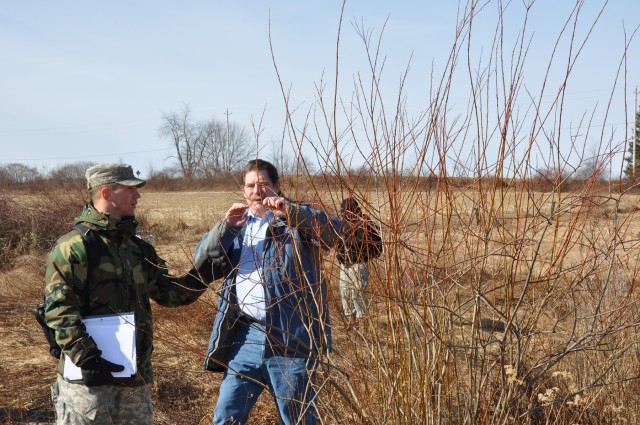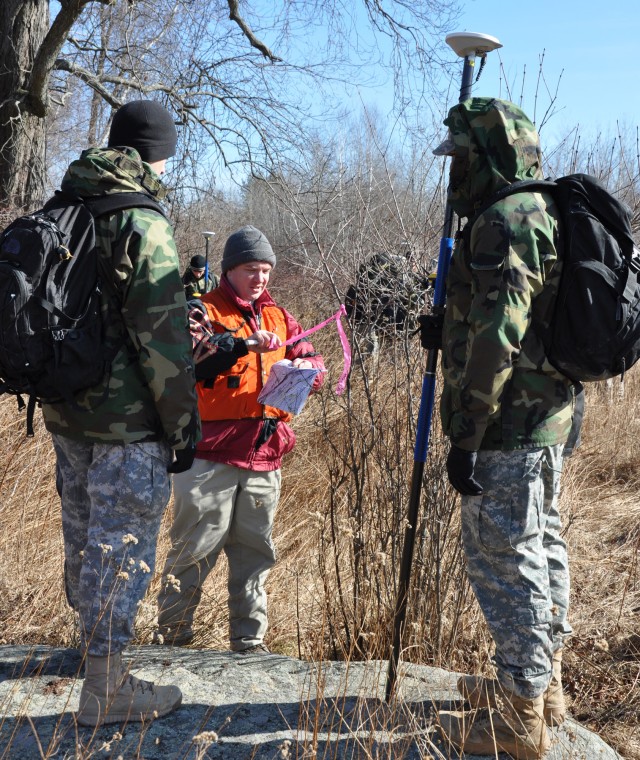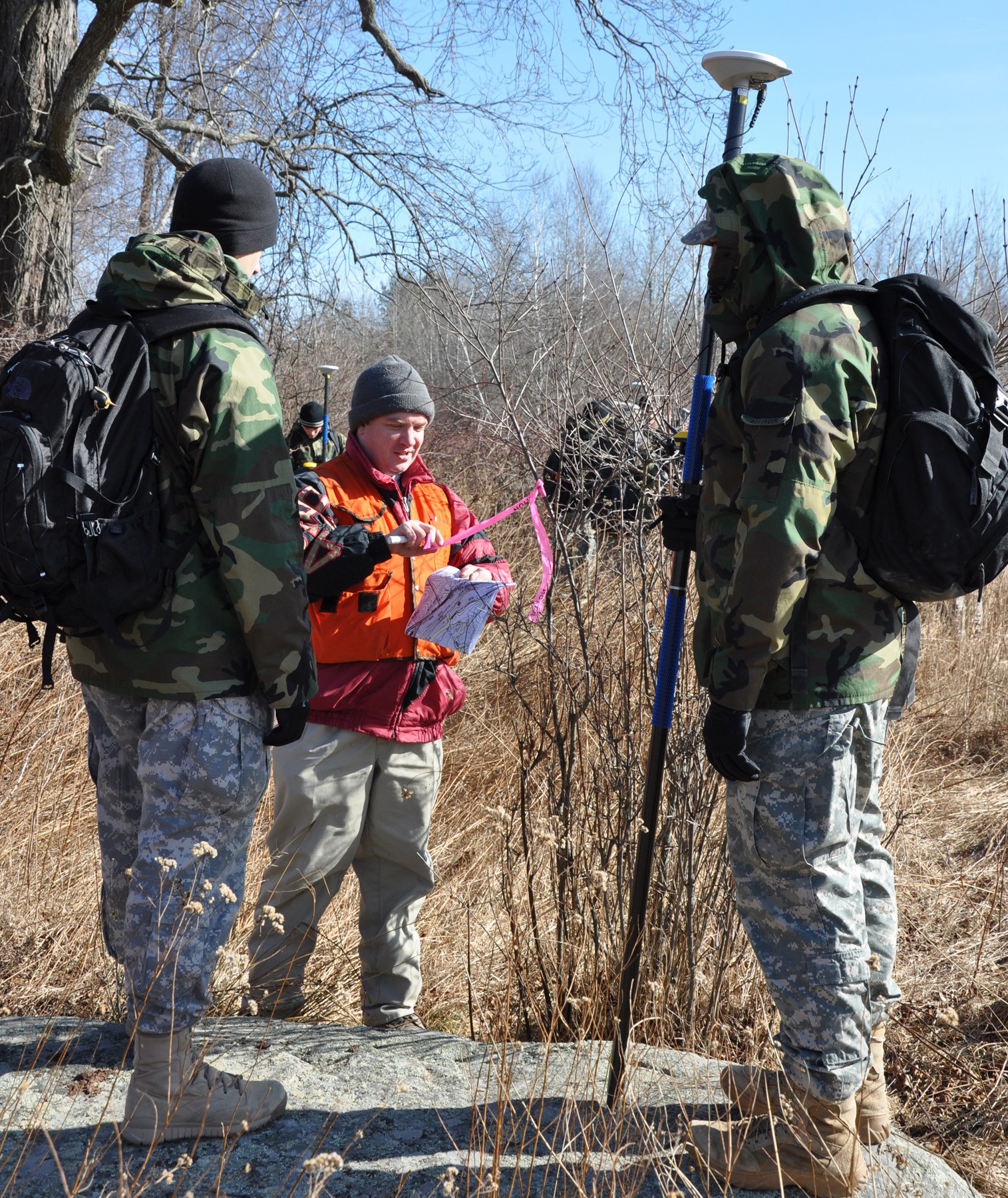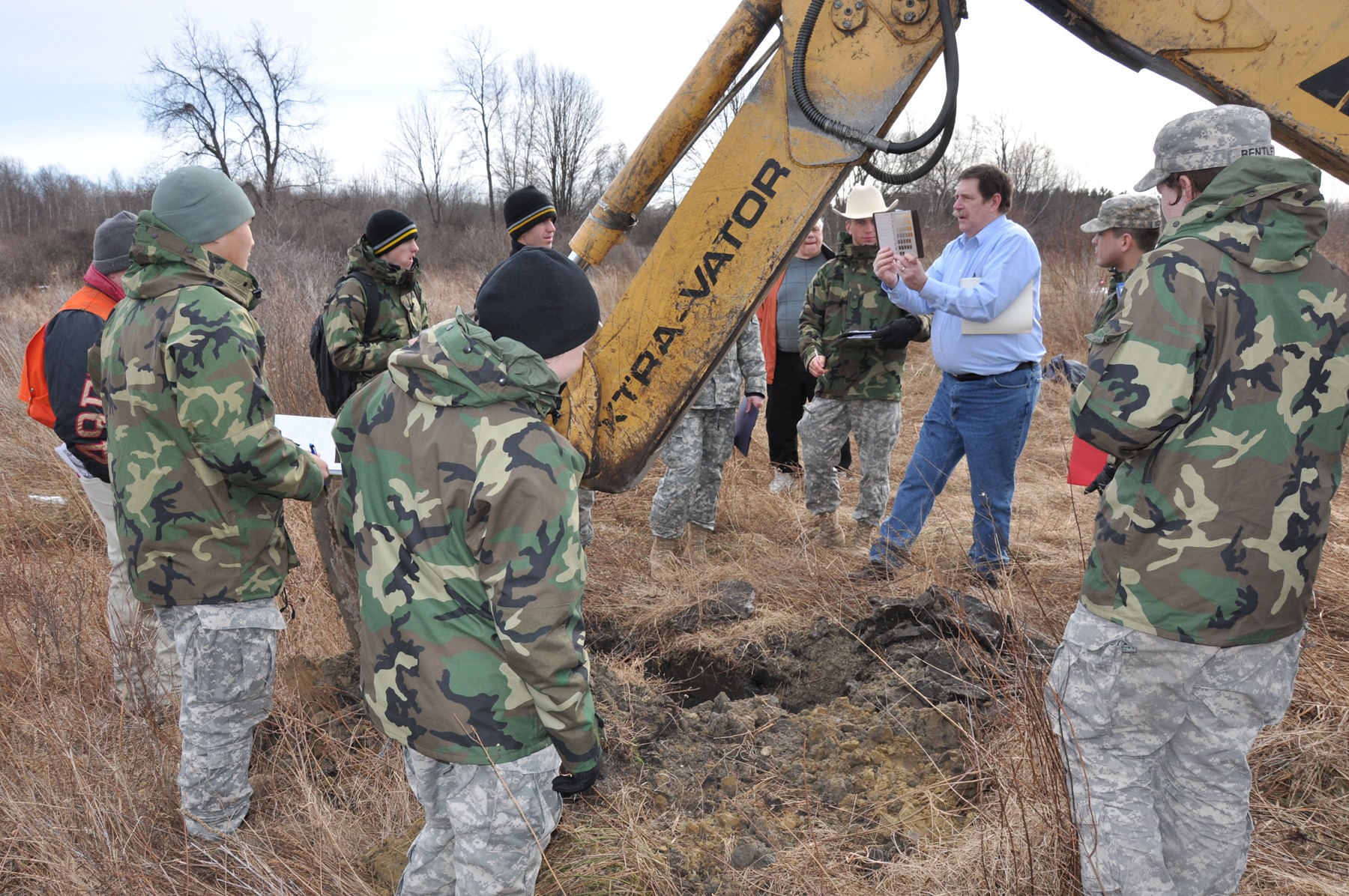Several West Point cadets got the chance to see the Army in action in a way they may have never imagined when they spent the day with the U.S. Army Corps of Engineers New York District. Member of the district's Regulatory Branch gave the cadets a special hands-on lesson in identifying federally defined wetlands.
The cadets joined regulatory officials from the District in rural Otisville, N.Y., to determine what areas are considered wetlands for development purposes. They also got to learn more about the Corps' overall regulatory program while they work on their final capstone design project, as they near graduation at the U.S. Military Academy.
A primary mission of the District's Regulatory Branch is issuing permits for projects that may have an impact on wetlands, and ensuring those projects meet strict federal requirements if they do. Those requirements can include being responsible for creating wetlands elsewhere to mitigate any potential impacts.
The West Point cadets, all senior civil engineering majors, were working on their final design course. The class is broken into teams, each responsible for working on creating the best real world design for a large facility for Cornell Cooperative Extension's 4-H clubs in Orange County.
The facility will include multiple buildings and the designs require the students to take into account a variety of factors ranging from infrastructure components like road and water connections to existing nearby farmland to permits for all facets of the work to be done.
That's where New York District's Regulatory Branch comes in.
In order to continue designing the Cooperative Extension Facility at the proposed Otisville site, the cadets needed to have wetlands in the area delineated so they could take into account where construction might or might not be feasible - just like any other design firm would have to in the real world.
"Wetlands are a valuable resource and it's important they are protected," said Brian Orzel, a New York District project manager. "For a long time, people haven't really appreciated everything wetlands do for us and for our environment."
Chris Mallery, chief of New York District's Western Permit Section and project managers Orzel and Stephan Ryba invited the cadets out to the site to participate in the actual wetlands delineation and to learn about one way the Corps is involved with projects around the country, including their own 4-H projects.
"Coming out here, we didn't know where all these wetlands were defined," said Cadet Ross Hartmann of Wallace, Idaho. "That's really going to change our site plans."
Most of the cadets said as civil engineering majors at West Point, they learned a lot about the Corps and its missions, but most were still surprised to learn about the Corps involvement in protecting federal wetlands throughout the country.
"It's surprising the reach that the Army, and the Army Corps of Engineers, has because it goes overseas with uniformed Army and with the Corps you come all the way out to Otisville," said Cadet Erica Triebenbach of Rochester, Minn.
The cadets learned about the importance of wetlands as well as the process for identifying what is and is not considered a wetland, like examining an area's hydrology, vegetation and soil.
The idea for the collaboration between West Point's Civil Engineering Division and the Cornell Cooperative Extension came about when Tom Davis of the local 4-H program was talking about plans for the project at a 4-H event with Lt. Col. Steve Hart, from West Point's Department of Civil and Mechanical Engineering.
"Everything he was talking about, everything these cadets are doing, has a direct analogy to what we do in Afghanistan," Hart said. "A barn that houses horses looks just like a maintenance facility where you work on your vehicles. A camp for kids looks just like a barracks. A memorial building where you're going to feed 300 people, it's a dining facility. It's all the things that we do in a base camp development, only it's in a place where we can actually go and stay on the site."
Hart also noted how unique the chance was for the cadets to work in the field with the experts from the Corps and how practical it could turn out to be down the road, especially since the class was all civil engineering majors.
"The opportunity to do this, from an educational perspective - nobody else gets that," Hart said. "Half those cadets, or two thirds of them - Corps of Engineers officers. They're going to go out and one day command Districts. It's 20 years from now, but it's the seeds you plant now that are going to make them successful later on."
In fact, Cadet Bridget Bentley, a Chicago native, said she liked the wide variety of missions districts execute and would be interested in a position with the Corps of Engineers in the future.
"I think it's interesting what they do," Bentley said. "You're not limited to just one thing; they cover so many different areas."
She said she had an opportunity to spend some time working near her home with the Chicago District and could see herself there in the future. That may take a while though, as officers generally don't see assignments to Corps districts until they've served as engineer officers and gained experience throughout the Army for at least eight years.






Social Sharing